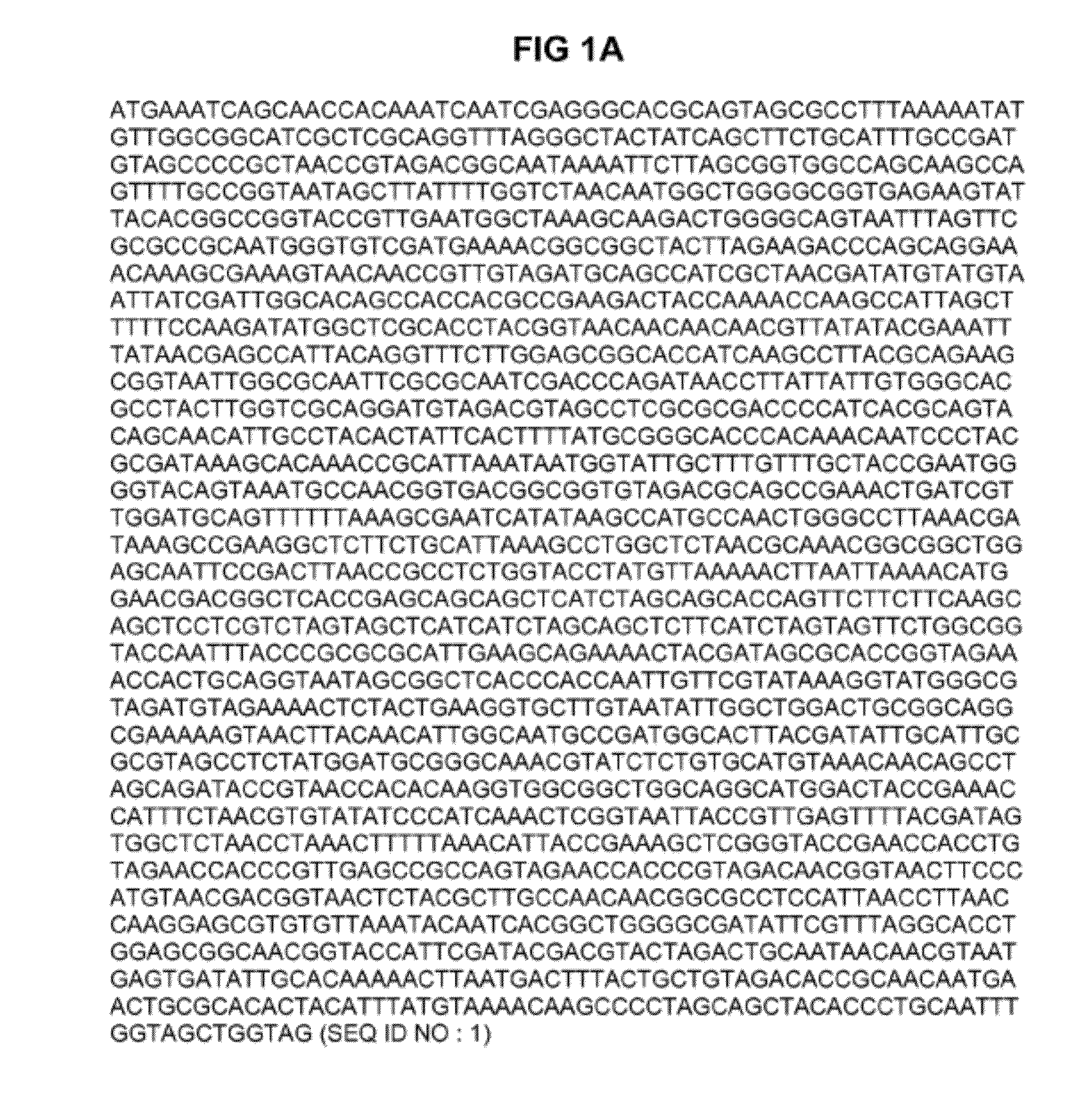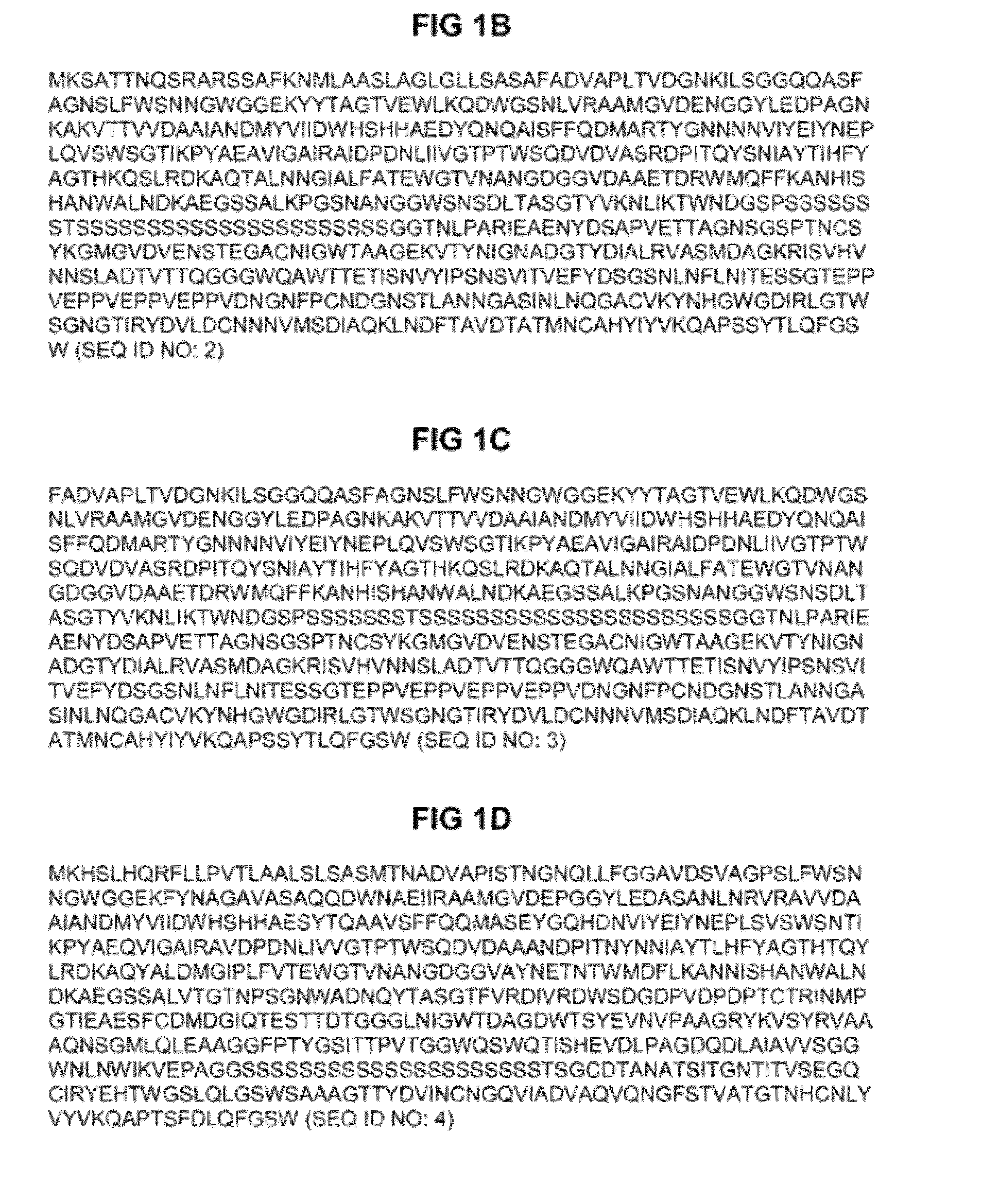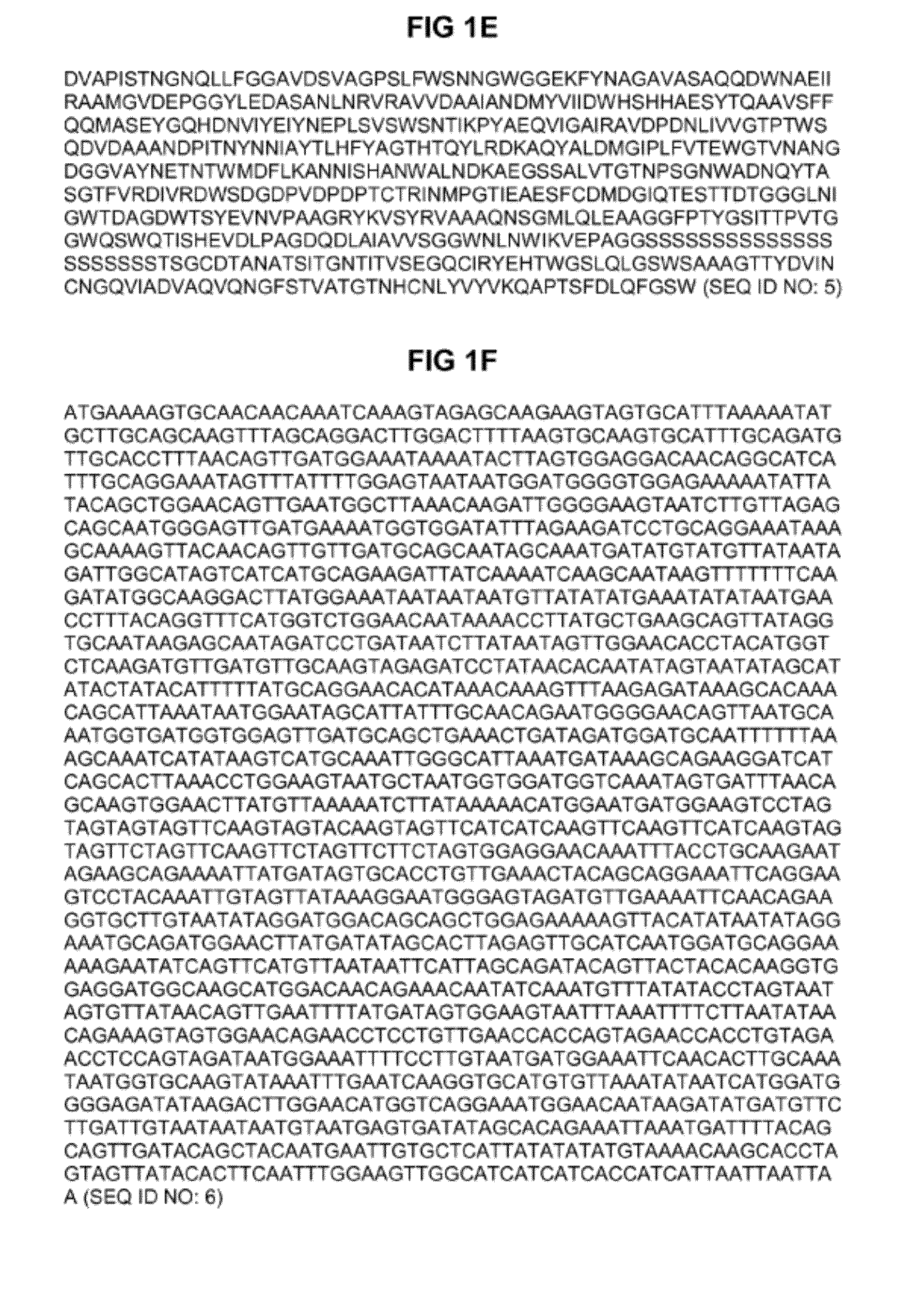Cellulase Cel5H related reagents and their use in microorganisms
a technology of cellulase cel5h and related reagents, which is applied in the field of biotechnology and genetic engineering, can solve the problems of unclear whether any of these enzymes would function appropriately and are not yet satisfactorily advanced, and achieve the effect of advantageous heterologous production and increased activity on crystalline cellulos
- Summary
- Abstract
- Description
- Claims
- Application Information
AI Technical Summary
Benefits of technology
Problems solved by technology
Method used
Image
Examples
example 1
Identification of the Novel DZ Domain of Cel5H
[0165]The published analysis of the putative cellulases produced by S. degradans (Taylor et al. 2006, supra) indicated the following organisation for Cel5H (from N-terminal to C-terminal ends of the enzyme): signal sequence / catalytic module (GH-family 5) / serine-rich linker / carbohydrate binding module belonging to CBM-family 6 / glutamic acid- and proline-rich-linker, in other denotation signal sequence-GH5-PSL-CBM6-EPR.
[0166]We have performed a more thorough sequence analysis which revealed the existence of a novel about 100-aminoacid long domain termed DZ domain at the C-terminus of Cel5H, from position 496 to position 596 in SEQ ID NO: 2 (FIG. 1B). Hence, the organisation of Cel5H can be denoted as signal sequence-GH5-PSL-CBM6-EPR-DZ. Since the DZ domain is rich in aromatic residues (Trp, Tyr) it may plausibly represent a new type of carbohydrate-binding module (CBM).
[0167]A search for homologous domains in non-redundant DNA sequence dat...
example 2
Production of Entire (Wild-Type), Truncated Cel5H, and Engineered Forms of Cel5H in E. coli
[0169]Using molecular biology techniques the DNA encoding the mature form of Cel5H (without signal sequence) was amplified and cloned in an E. coli expression vector (pET22b(+), Novagen). The resulting vector was used to transform the E. coli strain BL21 (DE3) (Novagen). Similarly, modified genes encoding truncated or engineered forms of Cel5H were obtained by PCR and cloned in pET22b(+), prior to transformation of E. coli strain BL21 (DE3). In all cases, six His codons were grafted at the C-terminus extremity of the recombinant proteins to facilitate their purification on Nickel resin (Ni-NTA, Qiagen). The various engineered forms of Cel5H are summarised in FIG. 2.
[0170]The recombinant strains were grown in Luria Bertani medium and the expression of the cloned genes was triggered using IPTG as the inducer. The synthesis of the recombinant Cel5H was verified by denaturing polyacrylamide gel e...
example 3
Purification and Characterisation of the Various Forms of Cel5H and Evaluation of Activity on Various Substrates Including Carboxymethyl Cellulose (CMC), Phosphoric Acid-Swollen Cellulose (PASC), Avicel and a Raw Substrate, the Hatched Straw
[0171]Cel5H, Cel5Ht and Cel5Ht-CBM3a were purified by loading the crude extract on Ni-NTA (Qiagen), and elution of the protein of interest using increasing concentrations of imidazolium. Purification was achieved using FPLC Q-sepharose (Hitrap Q HP resin, GE Healthcare) as described below.
[0172]Alternatively Cel5H but also Cel5H-CBM3a and CBM3a-Cel5H constructs were purified using a different procedure. The crude extract containing these proteins was incubated with PASO at 4° C., and centrifuged. The cellulose pellet was washed several times by centrifugation in phosphate buffer, and the proteins specifically bound to the cellulase were eluted from the matrix using pure water or 1% triethylamine. The purification was achieved by loading the fract...
PUM
| Property | Measurement | Unit |
|---|---|---|
| concentration | aaaaa | aaaaa |
| concentration | aaaaa | aaaaa |
| pH | aaaaa | aaaaa |
Abstract
Description
Claims
Application Information
 Login to view more
Login to view more - R&D Engineer
- R&D Manager
- IP Professional
- Industry Leading Data Capabilities
- Powerful AI technology
- Patent DNA Extraction
Browse by: Latest US Patents, China's latest patents, Technical Efficacy Thesaurus, Application Domain, Technology Topic.
© 2024 PatSnap. All rights reserved.Legal|Privacy policy|Modern Slavery Act Transparency Statement|Sitemap



